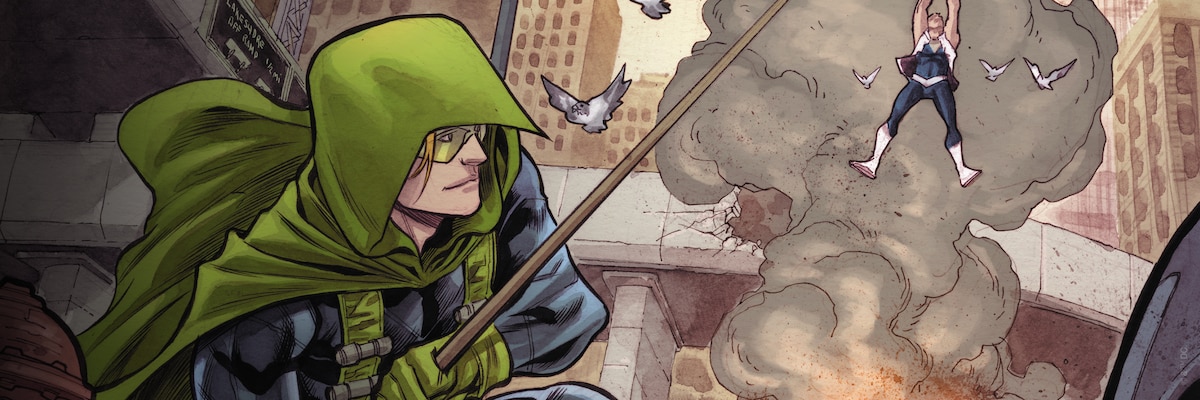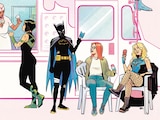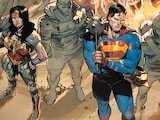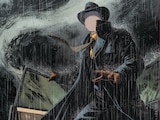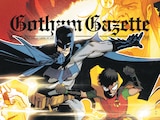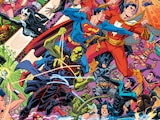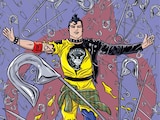In 1991, the Flash and his former enemy Pied Piper had a rooftop conversation, and the short scene wound up being one of the most important comic book moments of the year.
The Flash #53, written by William Messner-Loebs and penciled by Greg LaRocque, begins with Wally West (who was the Flash at the time) and Hartley Rathaway looking down on Central City from atop one of its high-rises. For years, Hartley had been one of the Flash’s greatest enemies, but the Pied Piper had reformed, becoming one of the hero’s closest friends.
And what do close friends do when one of them is a superhero and the other is a former villain? They gossip about other villains! Wally wants to know if Hartley has the scoop on any other super-villains and asks if the Joker is gay.
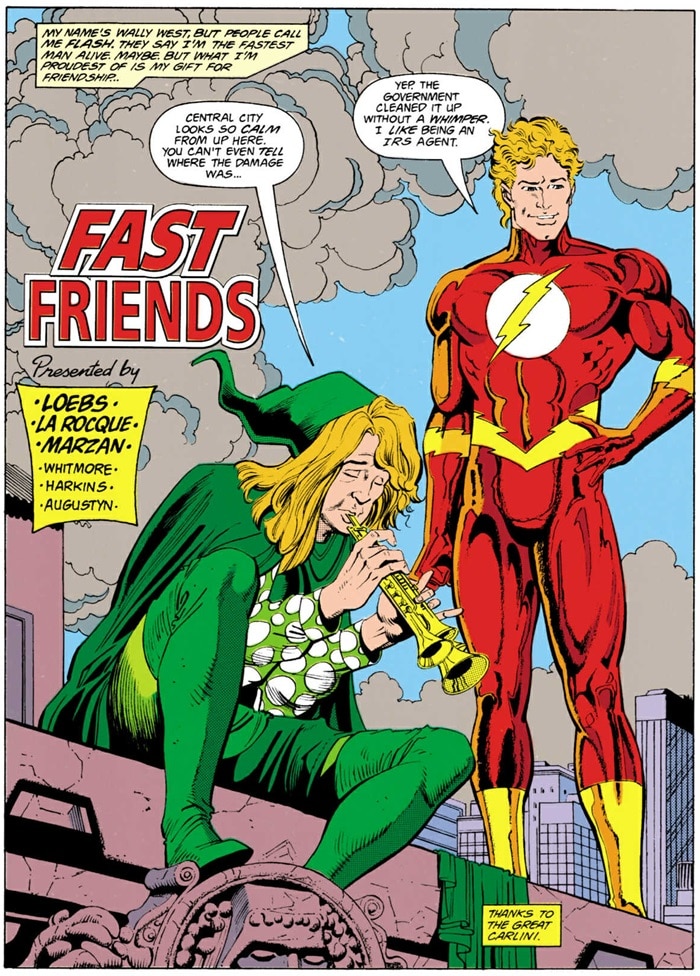
“Guys like that, you can always tell…there are signals,” Wally says in a less than enlightened moment.
“I can’t think of any super-villain who is,” Pied Piper responds with a smile. “Well, except me, of course.”
Wally is visibly surprised, much to Hartley’s amusement.
“But you knew that, right?” Pied Piper asks.
“Me? Oh, sure…I mean, how could I not know something as…as…” Flash replies, clearly flustered.
Hartley asks if it bothers Wally, to which the speedster says it doesn’t. However, he leaves seconds later, stating he has an important appointment.
“Right,” Hartley says as Wally runs off. “Glad it didn’t bother you.”
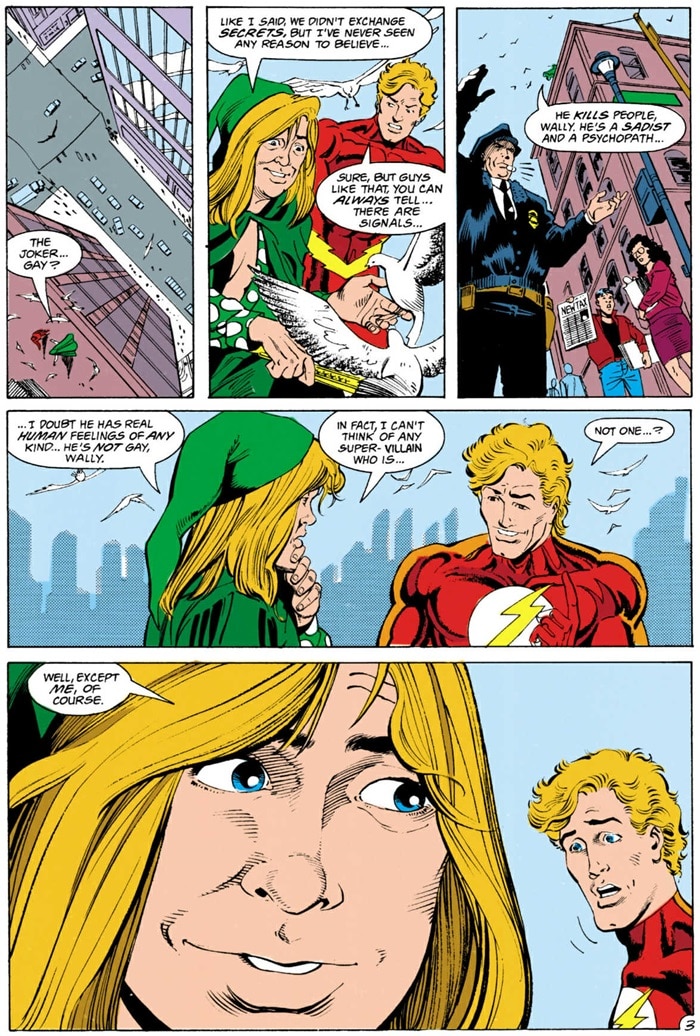
Wally really did have an appointment. At the time, he was employed as a special agent for the IRS. However, his internal thoughts reveal that he “just had to get out of there” so he could give himself time to think and take in Hartley’s revelation.
To be fair, this wasn’t homophobia on Wally’s part, even if he could have handled the whole thing much better. Wally was being socially awkward and felt embarrassed that he had stuck his foot in his mouth. However, the Flash’s quick exit did underscore a very real fear gay people have when they’re coming out: what if your friends won’t accept you for who you are? This was a real fear in 1991, and even though we’ve come far as a society, it’s still a real fear in 2025.
If there was any question about the state of Wally and Hartley’s friendship, the end of the issue makes it clear their relationship is fine. In order to defeat a kidnapper, Wally disguises himself and has Pied Piper wear his Flash costume in order to throw the villain off. When the ruse is revealed, Wally tells Superman and Jimmy Olsen, “I’ve got a talent for picking fast friends.”
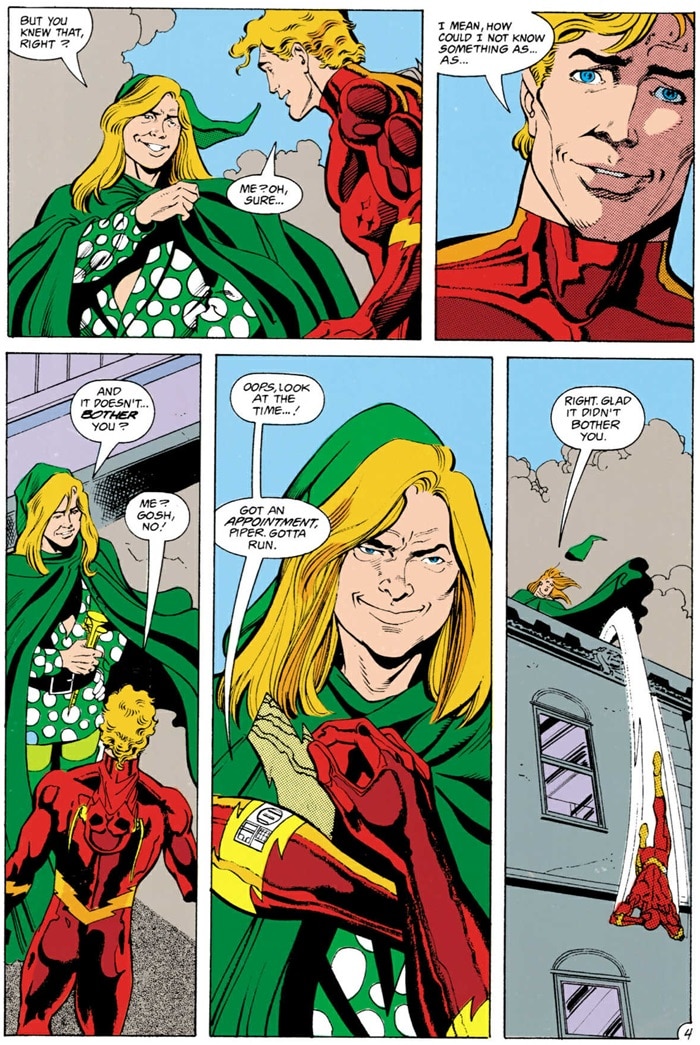
Notably, Wally is leaning on Hartley as he says this. While the statement is a bit disproportionate to Wally’s initial reaction of running away, in 1991, this was a big deal.
Pied Piper wasn’t the first gay character in a DC comic, but his coming out scene was a turning point. This wasn’t a Doom Patrol, Swamp Thing or Sandman character, or a non-costumed civilian speaking in code. This was a classic costumed villain from the Silver Age.
This wasn’t lost on queer readers, who were severely hungry for representation in 1991. The letters page for The Flash #56 features a letter from Jon Bourgault, who was president of the gay/lesbian student association at the University of Houston.
“Thank you for finally introducing an openly gay character to a mainstream comics title and for making him a character who is not stereotypical and does not seem to have a problem dealing with his own sexuality,” he writes. “You’ve taken a major step in opening up mainstream comics to diversity. After years of waiting, I’ve finally found a character who reflects the reality of my life and the lives of thousands of other comics readers. It’s a change that’s been too long in coming.”
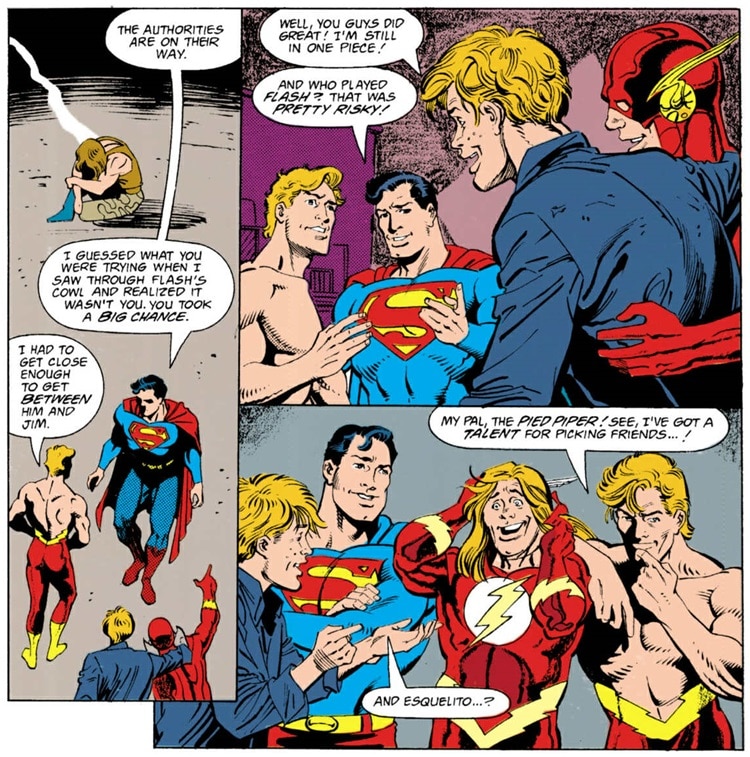
Bourgault’s letter puts in perspective just how important Hartley’s coming out was. There were many readers like Bourgault who had spent years seeing gay people portrayed as depraved villains in television and film. In comics, gay characters seemed to only be the domain of indie comics or mature reader titles like Doom Patrol.
When a gay character did appear in a mainstream superhero title, they were often a stereotype like Extraño, or their sexuality was something hinted at, but not said aloud, much like Maggie Sawyer. Pied Piper was different. He wore a costume. He fought alongside the Flash. He said the word “gay” without any ambiguity. In 1991, this was unheard of.
Today, mainstream DC superheroes like Jon Kent, Tim Drake, Kate Kane and many more are popular, beloved and openly queer. The DC Universe has come a long way. But it was Hartley Rathaway that took the first step.
Joshua Lapin-Bertone writes about TV, movies and comics for DC.com, is a regular contributor to the Couch Club and writes our monthly Batman column, "Gotham Gazette." Follow him on Bluesky at @joshualapinbertone and on X at @TBUJosh.
NOTE: The views and opinions expressed in this feature are solely those of Joshua Lapin-Bertone and do not necessarily reflect those of DC or Warner Bros. Discovery, nor should they be read as confirmation or denial of future DC plans.
